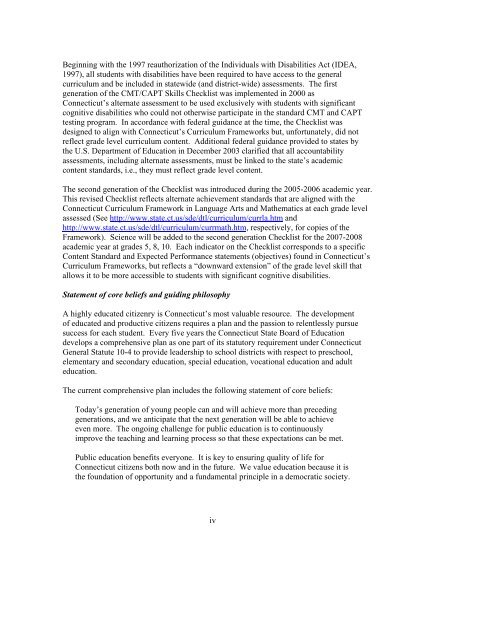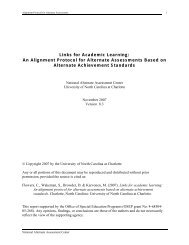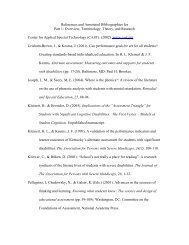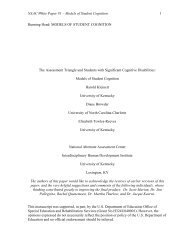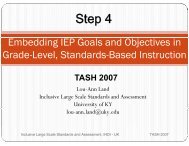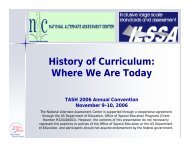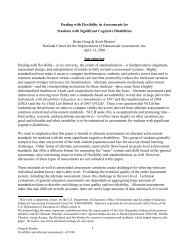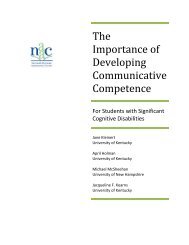CMT-CAPT Skills Checklist Technical Manual. - NAAC
CMT-CAPT Skills Checklist Technical Manual. - NAAC
CMT-CAPT Skills Checklist Technical Manual. - NAAC
You also want an ePaper? Increase the reach of your titles
YUMPU automatically turns print PDFs into web optimized ePapers that Google loves.
Beginning with the 1997 reauthorization of the Individuals with Disabilities Act (IDEA,1997), all students with disabilities have been required to have access to the generalcurriculum and be included in statewide (and district-wide) assessments. The firstgeneration of the <strong>CMT</strong>/<strong>CAPT</strong> <strong>Skills</strong> <strong>Checklist</strong> was implemented in 2000 asConnecticut’s alternate assessment to be used exclusively with students with significantcognitive disabilities who could not otherwise participate in the standard <strong>CMT</strong> and <strong>CAPT</strong>testing program. In accordance with federal guidance at the time, the <strong>Checklist</strong> wasdesigned to align with Connecticut’s Curriculum Frameworks but, unfortunately, did notreflect grade level curriculum content. Additional federal guidance provided to states bythe U.S. Department of Education in December 2003 clarified that all accountabilityassessments, including alternate assessments, must be linked to the state’s academiccontent standards, i.e., they must reflect grade level content.The second generation of the <strong>Checklist</strong> was introduced during the 2005-2006 academic year.This revised <strong>Checklist</strong> reflects alternate achievement standards that are aligned with theConnecticut Curriculum Framework in Language Arts and Mathematics at each grade levelassessed (See http://www.state.ct.us/sde/dtl/curriculum/currla.htm andhttp://www.state.ct.us/sde/dtl/curriculum/currmath.htm, respectively, for copies of theFramework). Science will be added to the second generation <strong>Checklist</strong> for the 2007-2008academic year at grades 5, 8, 10. Each indicator on the <strong>Checklist</strong> corresponds to a specificContent Standard and Expected Performance statements (objectives) found in Connecticut’sCurriculum Frameworks, but reflects a “downward extension” of the grade level skill thatallows it to be more accessible to students with significant cognitive disabilities.Statement of core beliefs and guiding philosophyA highly educated citizenry is Connecticut’s most valuable resource. The developmentof educated and productive citizens requires a plan and the passion to relentlessly pursuesuccess for each student. Every five years the Connecticut State Board of Educationdevelops a comprehensive plan as one part of its statutory requirement under ConnecticutGeneral Statute 10-4 to provide leadership to school districts with respect to preschool,elementary and secondary education, special education, vocational education and adulteducation.The current comprehensive plan includes the following statement of core beliefs:Today’s generation of young people can and will achieve more than precedinggenerations, and we anticipate that the next generation will be able to achieveeven more. The ongoing challenge for public education is to continuouslyimprove the teaching and learning process so that these expectations can be met.Public education benefits everyone. It is key to ensuring quality of life forConnecticut citizens both now and in the future. We value education because it isthe foundation of opportunity and a fundamental principle in a democratic society.iv


